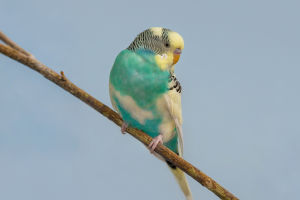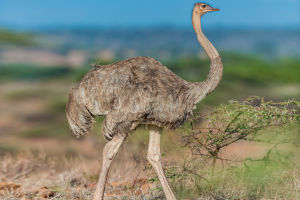
ever seen a bird that looks like it came straight out of a painting? If not, it’s time we introduce the long-tailed parakeet — a bright, lively, and social bird from the tropical forests of Southeast Asia.
With its eye-catching feathers and cheerful nature, this bird is a joy to spot, and even more fun to learn about!
Where Do These Birds Live?
Long-tailed parakeets (Psittacula longicauda) are native to Malaysia, the Andaman and Nicobar Islands, Sumatra, and Borneo. We can often find them living in coastal rainforests, mangrove swamps, forest edges, and even in areas partly cleared for farming. They're quite adaptable — sometimes even showing up in palm plantations or gardens.
What Do They Look Like?
Male long-tailed parakeets are dressed to impress. They wear a green “helmet” on their heads, have bold red patches on each side of the face, a bright red beak, and a black stripe that runs along their cheeks like a curved smile. Their upper backs are tinged with pale blue, while their tails end in sunny yellow tips. The wings? A smooth light blue — it’s like a rainbow in green shades.
Females are more subtle. Their beaks are black, their cheek markings are less dramatic, and they lack the blue on their backs. But they still have that beautiful green plumage, with yellow undersides to the wings and soft yellow-green eyes. Both male and female birds are stunning in their own way.
What Do They Eat?
These birds are fruit lovers through and through. We can usually find them munching on fruits, seeds, flower petals, fresh plant buds, and young leaves. If there's a fruit tree nearby, don’t be surprised if you hear their sharp calls echoing from the branches — they’re just having a feast!
How Do They Behave?
Long-tailed parakeets are highly social birds. They love staying in flocks and are rarely seen alone. Their calls are loud and sometimes sound a bit harsh, but that’s just how they keep in touch with each other across the treetops. Watching a group of them flying together is like seeing a green wave glide through the sky.
Breeding Season and Baby Birds
Their breeding season usually runs from February to May. A female lays about 4 to 5 eggs each time. The incubation lasts for around 23 days, and after hatching, the chicks stay in the nest for about 7 weeks. Even after they leave the nest, they’ll stick close to their parents for another couple of weeks before flying out on their own.
Are They in Danger?
Yes — and that’s the sad part. The long-tailed parakeet is listed as "Vulnerable" by the IUCN, which means their population is shrinking. Forest destruction, land clearing for farming, and the illegal bird trade have taken a toll on their numbers. If we want to keep hearing their calls in the wild, protecting their natural habitats is crucial.
What Can We Do?
We can help by supporting conservation groups, avoiding buying wild birds, and learning more about tropical ecosystems. Even small steps like choosing eco-friendly travel options and spreading awareness can make a big difference.
Let’s Keep Watching the Skies!
Lykkers, wasn’t it fascinating to get to know the long-tailed parakeet? These birds are not just beautiful — they’re also an important part of their ecosystem. Next time we’re near a tropical forest in Southeast Asia, let’s keep our eyes peeled and our ears open. Maybe we’ll catch a glimpse of these green wonders soaring above us.
Have you ever seen one in real life? Or maybe heard their sharp call through the trees? Tell us — we’d love to hear your story!
The Long Tailed Parakeet *ITS FOOD TIME | WILDLIFE SINGAPORE BIRDING | 4K
Video by Singapore | Nature Birding Wild


